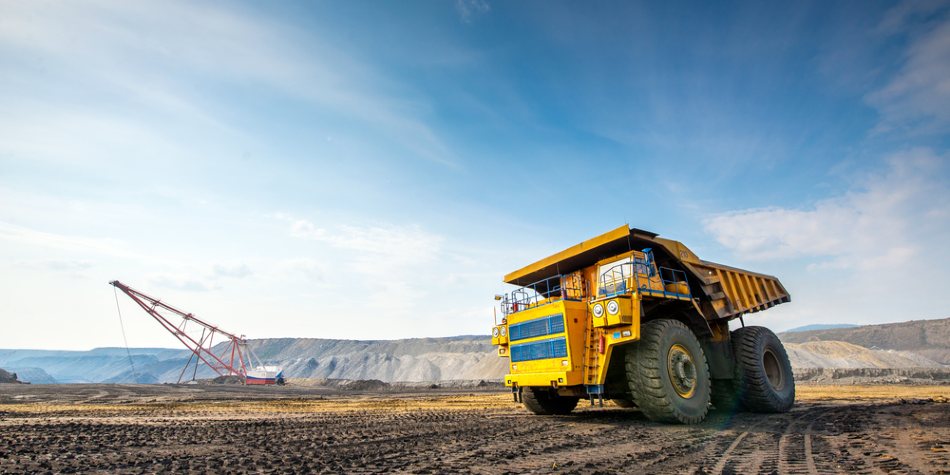
Image Credit: Mark Agnor/Shutterstock.com
To enhance safety, satisfy federal guidelines and optimize profitability, mining operations are embracing fiber optic systems as a cost-effective networking option that can offer world-class communications along with bandwidth for voice communication, data collection, and video applications.
In any mining operation, and in underground mining operations, in particular, communications infrastructure is a crucial part of the operation, and the demands on a modern mining communication system can be quite high. As physical environments, mines are continuously shifting, with the possibilities of explosions, falling rocks, flooding, extreme temperature swings, and electromagnetic interference. An underground communications network must withstand these conditions, or at least not exacerbate risk.
Communication in the Mine
Over the years and with the rise of digital communications, the demands on a mining communications network have risen. With the incorporation of video monitoring, sensor data, miner data, machine control possibilities and voice communication into a singular network, bandwidth has become extremely important to safe and productive mining operations.
Fiber optic technology has become the technology of choice for highly dependable and safe mining communications. Made up of tiny strands of glass, fiber optic cables can send light signals at extremely high speeds. Since these cables don't conduct electricity, they are inherently safer than copper wire, which is prone to releasing dangerous currents and fire-causing sparks.
Moreover, since fiber optics are comprised of glass, they are resistant to induced currents and electromagnetic interference produced by the kind of large electrical gear typically found in mining operations. Highly durable and resistant to flame spread, fiber optics systems can be made specifically for use in mining.
In addition to being dependable, high speed, safe, high quality, versatile and modular in nature, fiber optic networks can provide real-time data and communication. These systems are also able to send massive amounts of information across long distances. Built to be modular for maintenance, extension and portability purposes, fiber optic systems are widely available, easy to install and easy to maintain.
Fiber optic networks for mining have mainly been comprised of multimode optical fiber, which permits the transmission of numerous modes of light. This kind of fiber offers a lot of bandwidth that is capable of supporting Ethernet protocols across short distances. It is also more than capable of supporting machine control applications and miner tracking technology.
The capacity to transmit information over distance is often called the bandwidth distance product. Due to the large core size of multimode fiber, the bandwidth distance product can be a concern for large networks. Furthermore, multimode fiber has a high degree of intrinsic light attenuation or leaking of optical power. This can be a major limiting factor in large networks as well.
It is essential to recognize that attenuation can be made worse by external factors, such as incorrect handling or excessive stress during operation. For instance, excessive bending during installation can increase attenuation. In the past several years, the quality of optical fiber has improved considerably, with reduced intrinsic attenuation, greater bandwidth distance product and greater physical performance in bending. To work correctly in mining conditions, optical fibers must be housed in sturdy cables that can sustain valuable transmission qualities.
Facilitating Emergency Communications
Any fiber optic system certified for use in mining operations must include fibers utilized solely for emergency communications. These fibers must also be clearly labeled in communication boxes located along the mine shaft.
Fiber optic proximity sensors are often incorporated into the communications system. These sensors are attached to doors, barriers, storage units and various access points. These sensors allow for the remote tracking of miners and mining vehicles. They function as an alert system for emergencies and can help first responders reduce response time. These sensors can also be set up and used to quickly pinpoint the location of an emergency situation. Through the use of a latch in the system, the location of a dangerous or emergency situation can be identified even if the fiber is disrupted.
Facilitating a “Smart” Conveyor System
The entire point of a mining operation is to extract value and a conveyor system that moves extracted materials to the surface and/or a processing location is the heart of a mining operation. A modern conveyor system can be highly functional and must operate effectively for long periods of time without breaking down. Modern conveyor belt systems are usually linked to the fiber optic system to provide a control solution for operators.
Modern mining control systems are able to control connected motors to enable the easy circulation and sorting of the extracted product. A control system should be able to detect conveyor speed, angles of ascent and descent, weight distribution and load balancing for smooth operation. A conveyor system should also have fire and safety hazard detection capabilities.
Disclaimer: The views expressed here are those of the author expressed in their private capacity and do not necessarily represent the views of AZoM.com Limited T/A AZoNetwork the owner and operator of this website. This disclaimer forms part of the Terms and conditions of use of this website.